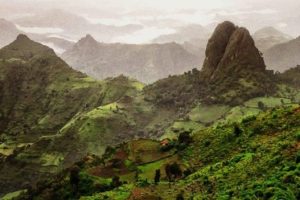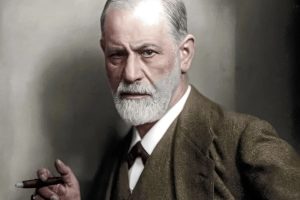BY FIKADU BELAY
Museums can promote a country’s cultural history, among other things. They also help to explore and teach past historical situations.
Like other African countries, Ethiopia has been playing many roles in Pan-Africanism movement after the Victory of Adwa. It has become a symbol of freedom not only for African countries but for all black people across the world.
The Ethiopianism movement arose at a time when black people were developing a strong sense of self-worth (black consciousness) and self-reliance rooted vision, where the spirit of pan-nationalism was fostered by young people from South Africa.
This movement produced a sense of solidarity that provided a basis for an African and critical spirit. Among Africans it instilled the confidence of acting independently of racist mission structures and challenging it.
When it comes to freedom fighters, besides Ethiopia, often, it is South African revolutionary Nelson Mandela who is mentioned in the first paragraphs.
In this sense, it is Ethiopia that played a remarkable role in training Nelson Mandela to engage in a guerilla fight for the dignity and freedom of his people. Ethiopia also served as a beacon for the rest of African countries to wake up and emancipate themselves from mental slavery.
We can also mention as immortal and iconic examples like Robert Mugabe of Zimbabwe the Rodesian Fighter against Britain’s colonial grip.
Addis Ababa Culture, Arts, and Tourism Bureau disclosed that it has finalized plans to renovate the former Fetno Derash Police Training Center to serve as the Nelson Mandela Memorial Museum.
Located in Kolfe Keranyo Sub City of the metropolis, the Fetno Derash Police Training Center is a place where the South African liberation fighter Nelson Mandela took training on guerilla fight in the early 1960s.
The Bureau Head, Hirut Kassaw (Ph.D.) told The Ethiopian Herald about the camp or place where Nelson Mandela was trained and lived. She as well noted architectural products and other equipment he used at that time are still available at the center, which can serve as must-see heritage site that could attract tourists.
The camp was established in the 1950s as a training camp for rapid police forces. It has not been maintained ever since. Therefore, it needs renovation to serve as a museum. The Office is working with Addis Ababa University, which will finalize and submit the design work. The renovation work would start immediately and are expected to be finalized in a yea time, the bureau head explained.
To be honest, this project will attract many tourists to the city from other countries. In this sense, the project will generate high income helpful in fighting out poverty. And it would also upscale Addis Ababa, the most important diplomatic city in the world.
Tourism will become a pillar of the development of Ethiopia through improving the protection and conservation of tourist attractions, growing the tourism infrastructure, developing a tourism marketing organization, and expanding educational and training facilities in the industry.
Turning the place to a touristic spot after Nelson Mandela will render Addis the capital of Africa. It as well will lead to more tourism, said Kalab Belachew, a Pan Africanism expert.
He said that when people from various African and other countries come to Ethiopia and visit the place where Nelson Mandela was trained and see the facilities used to such purpose, the trend will help promote the country’s other cultures and heritages .
The museum is expected to signify and foreground Ethiopia’s role as a symbol of African freedom, and is likely to help the country’s efforts to be among the world’s top 10 tourist destinations, Hirut added.
Ethiopian government’s initiatives in terms of tourism—the construction of the Unity Park, Entoto Park, Science Museum, and other destinations have changed the city’s role from a tourist transit to a tourist attraction spot.
She said that, the new Addis Ababa tourism brand, called The Vibrant Hub of Africa , and the newly introduced website are playing a significant role in promoting tourism activities in Addis Ababa.
Hirut underlined that, tourism institutions and the Ministry of Foreign Affairs (MoFA) are trying to work in coordination with the African Union to commemorate other influential Pan-Africanists of the past as well as the contemporarily ones.
Ethiopia’s natural, historical, and cultural resources can help the industry grow by identifying their value based on primary research and in collaboration with the corporate sector and the global tourism industry, Hirut added.
Kalab said that museums should be regularly organized and designed to showcase different cultures and histories. We should show Ethiopia’s heritage through different issues that always show the same situation in different places.
He said that this should be strengthened not only in Addis Ababa, but also in other parts of the region. For this, he said, the state of peace in the country should be maintained.
The Ethiopian Herald February 19/2023





